 |
WWII Uniforms / Flight Gear Ed Nored Collection |
Personnel
Mission Reports
photos copyright ©2006-2018 by Ed Nored, used by permission
Flight Gear 1944-1945 / F-3 Heated Suit
Parachutes 1943-1945
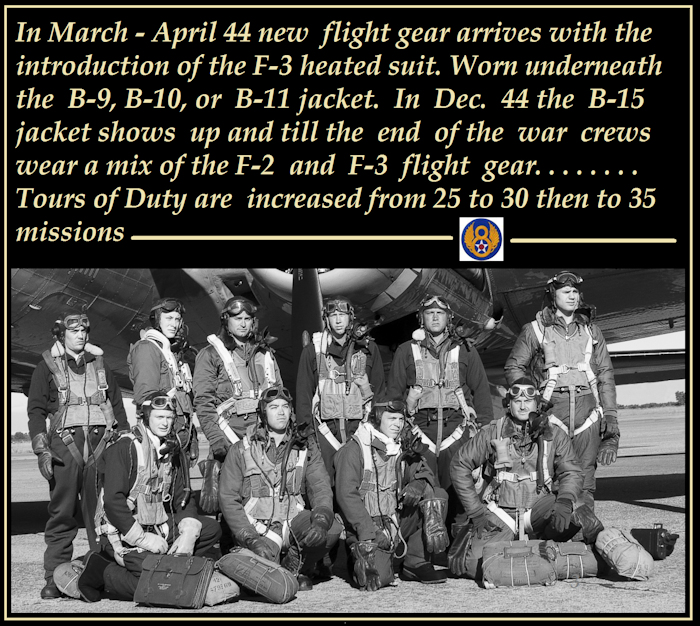
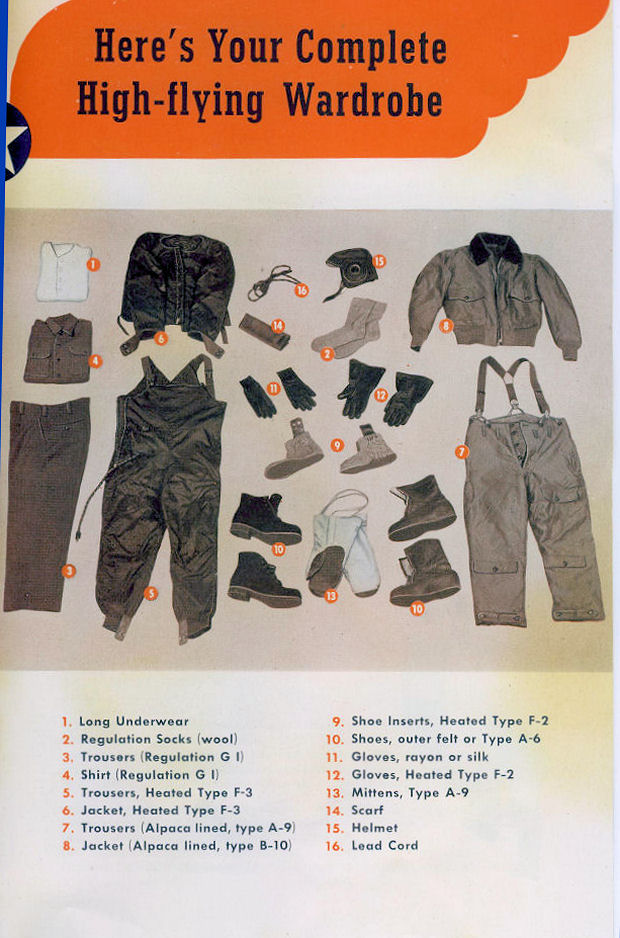
(4-1) Page 2 from the F-3 Heated Suit Instruction Booklet. Compare to the photo below.
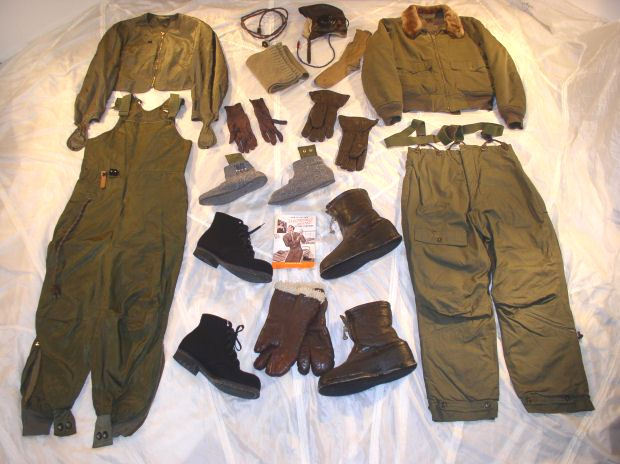
(4-2) Above is a recreation of the illustration found in the F-3 Instruction Booklet. I have excluded the wool shirt, trousers and long underwear.
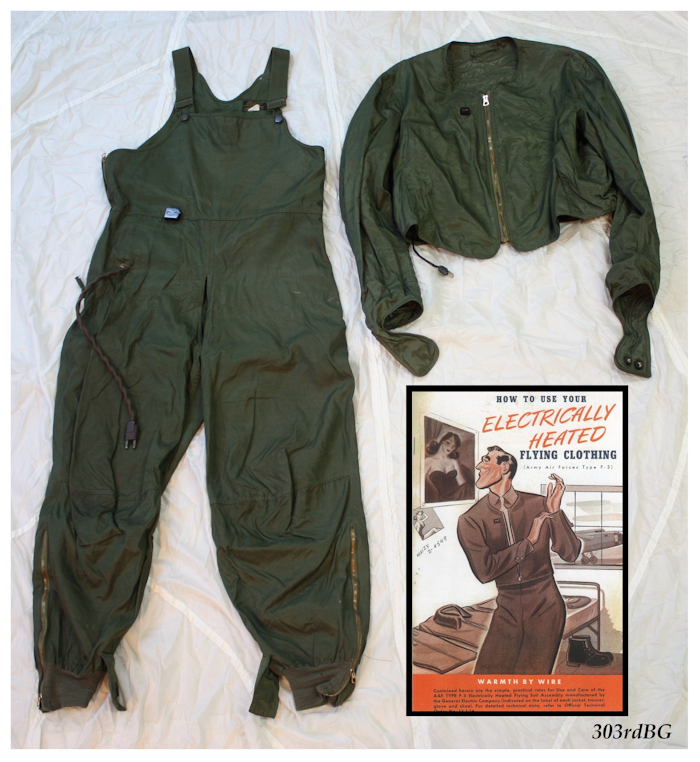
(4-XX) Shown above is an updated photo of the F-3 suit. The F-3A suit has improved connectors for the gloves and heated booties. Also shown is the front cover of the F-3 and F-3A handbook that's found in the original box of the heated jacket.
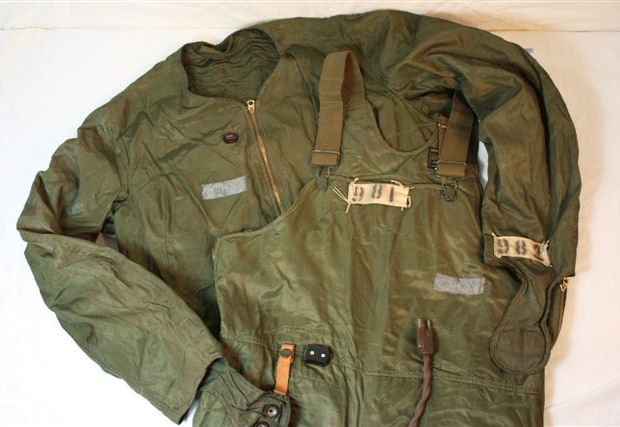
(4-3) Shown above is a veteran F-3 suit. The white squares painted on both the bolero type jacket and bib style heated pants were placed there to act as background for any stenciled I.D. (name or number) that may be applied to it. As can be seen, pieces of white material were instead tacked onto each piece. I'm fairly certain that 2Lt Lovold in the photo of Lead Crew #265 is wearing the F-3 with similar markings shown above. Another example of the markings can be seen on Sgt. Callicott of the 359th Stewart Crew. In Lead Crew Mission #340 F/O Silver is wearing the F-3 heated suit.
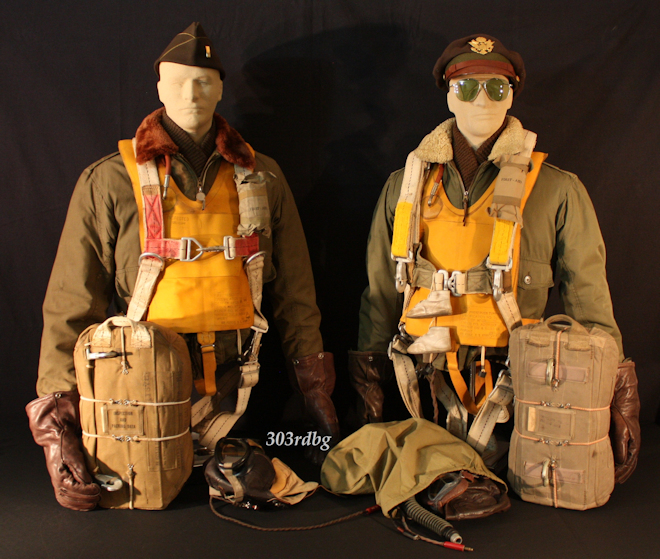
(4-xx) "Walking to the plane." The officer on the left is 100% authentic as he wears a real parachute first aid kit. (previously opened unfortunately) He wears a garrison cap and on the other a "crusher" cap. Many of the crew had some sort of small utility bag with a draw string at the top to carry their flight helmet and O2 masks, displayed in the photo. The presence of baby shoes in based on 3 photos I've seen of men holding or wearing them. Shoes displayed above is based the photo of Saferites Crew of the 398th BG.
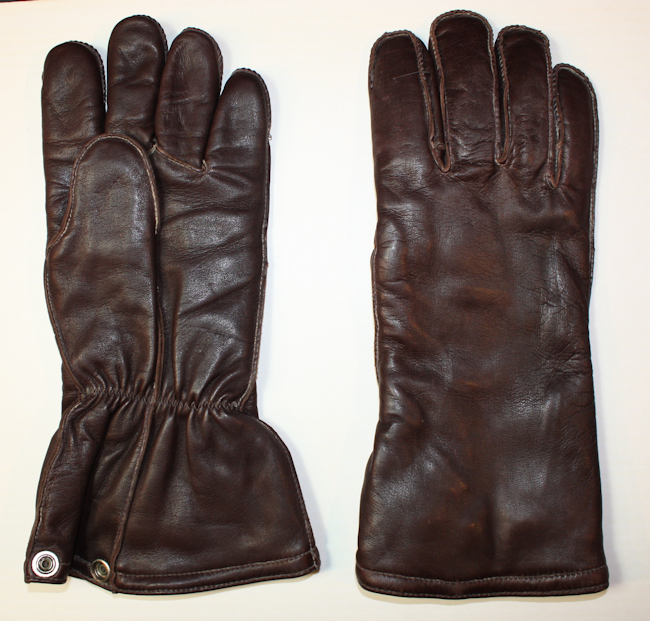
(4-xx) vvvvvvvvvvv

(4-xx) vvvvvvvvvvv
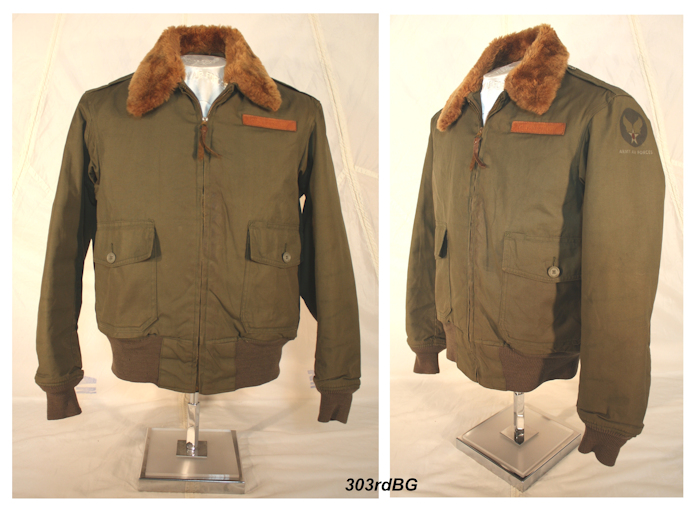
(4-xx) The B-10 jacket above was made by Rough Wear Clothing. The name tag reads C. T. Buehler. The last 4 numbers of his serial number are stamped inside: B 0215
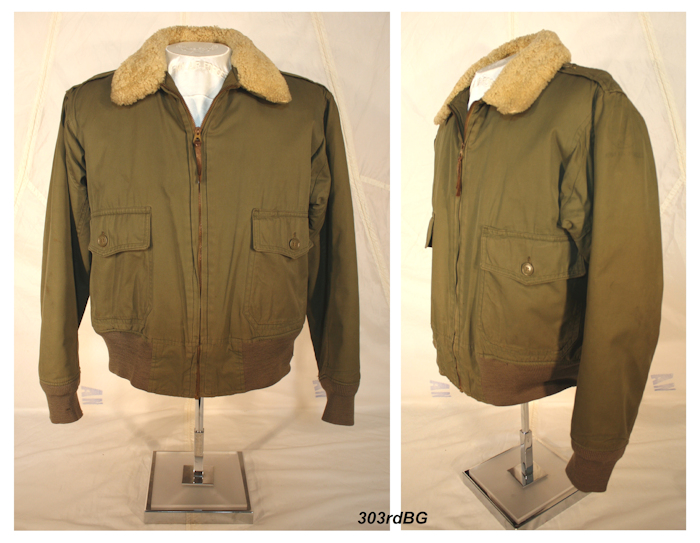
(4-xx) The B-10 jacket above is made by Oldin-Dennis. The owner's serial number stamped on back of collar: W 408? (the last number is too faint to read)
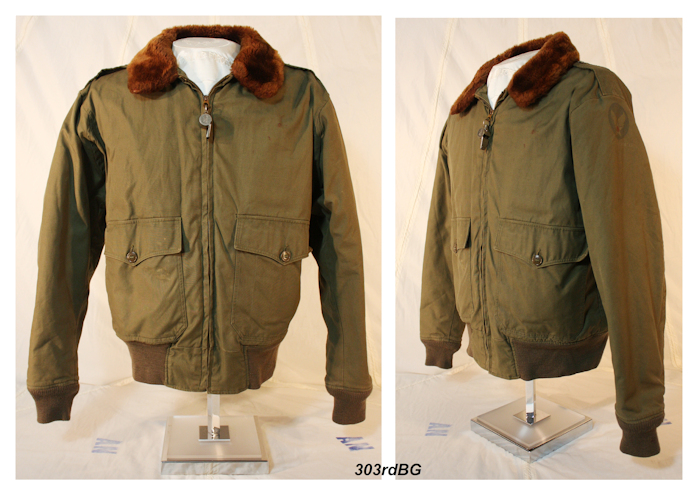
(4-xx) The B-10 jacket above was made by the Stagg Coat Company. It has a "cream" colored label. I could not find any serial numbers.
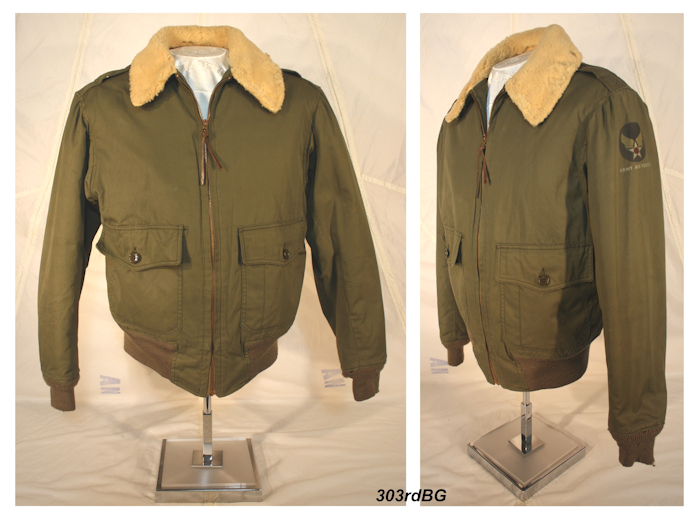
(4-xx) The B-10 above was made by the L.S.L. Garment Company. It has a "cream" colored label. No serial numbers could be found.
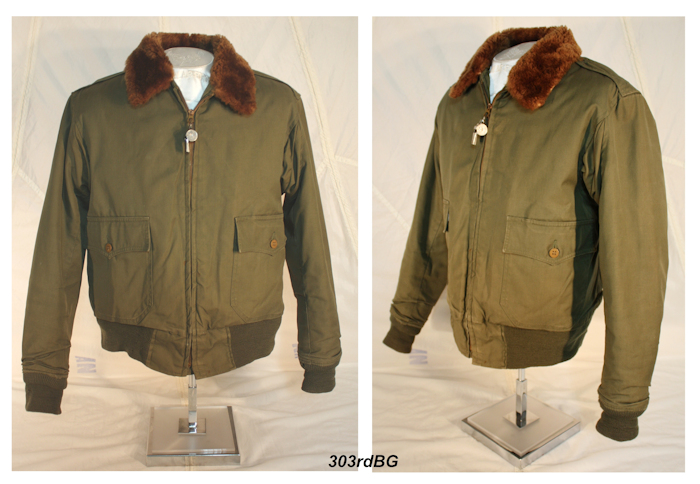
(4-xx) The B-10 above was made by the Sovereign MFG CO. No other markings were present.

(4-xx) vvvvvvvvvvv
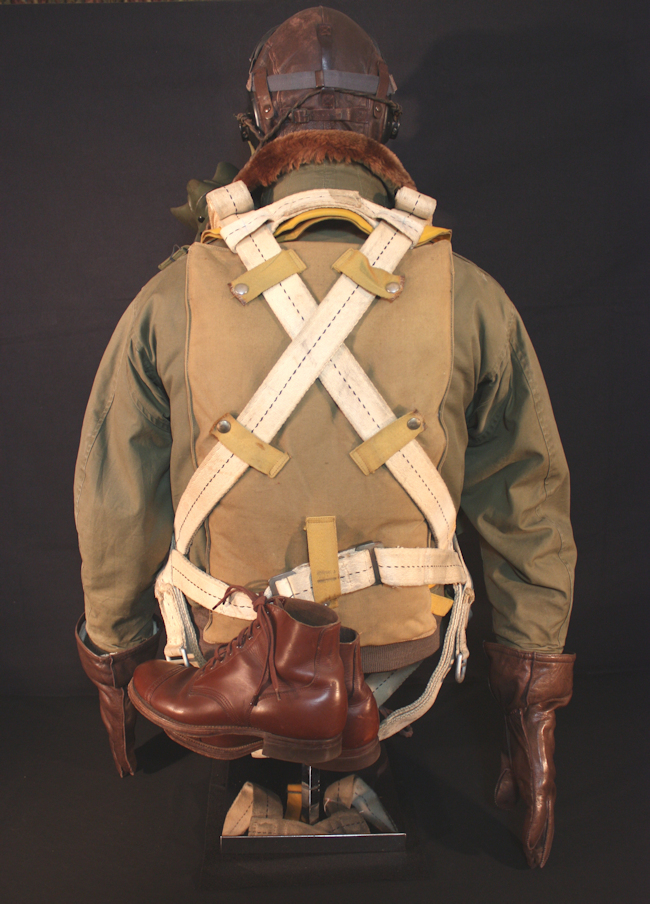
(4-xx) vvvvvvvvvvv
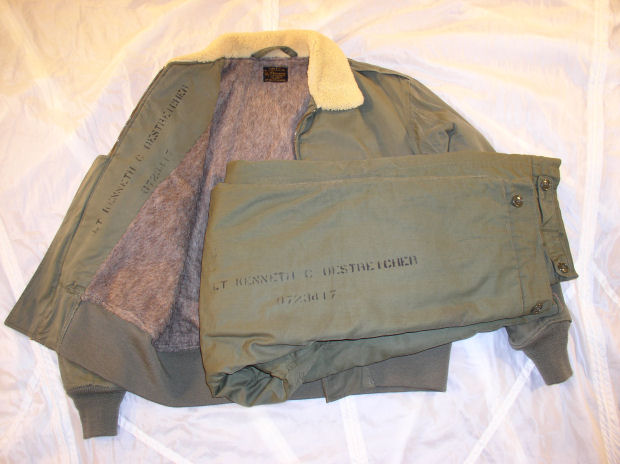
(4-4) Above are a pair of A-9 pants and a B-10 jacket showing how many AAF personnel marked their flight clothing. It should be noted that this veteran B-10 does not show any evidence that the AAF logo was ever on the shoulder.
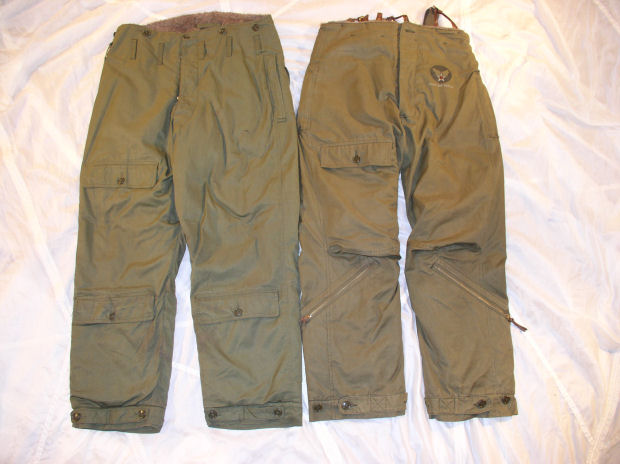
(4-5) Two examples of A-9 pants are shown above. On the left is the earlier version. It has belt loops and buttoned pockets. The newer version on the right has slant/zippered lower pockets as well as added material in the knees. The belt loops have been removed. These pants are heavy and suspenders are more appropriate.
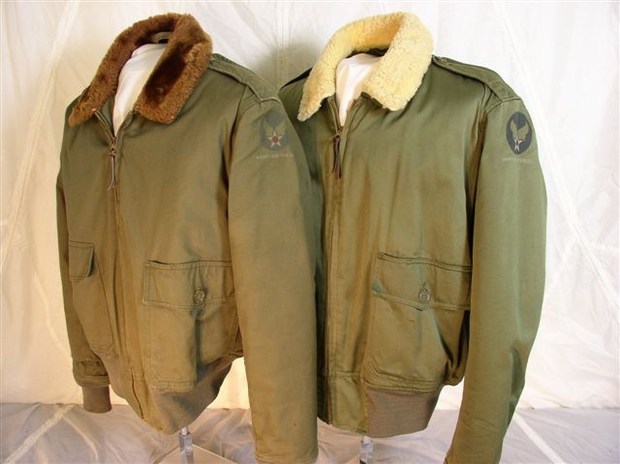
(4-6) Shown above are two B-10 examples with their AAF logo on the sleeves. In many cases this logo is missing from B-10 jackets. This fact is based on wartime photos, not post war collecting.
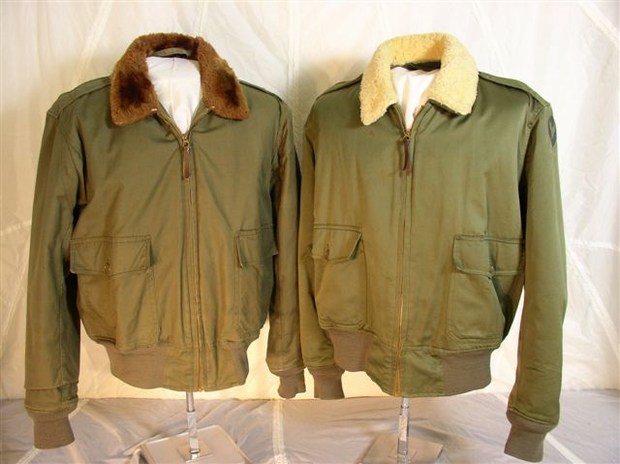
(4-7) Shown again are two B-10 flight jackets. Both were manufactured by the Oldin-Dennis Company. A B-10 with an original white shearling collar is a rare find. My best estimate is about 5 to 8 percent of B-10s had these. I can only speculate that when the Mouton fur, used on the majority of B-10s was not available, the maker was allowed to use the shearling as a substitute. See these two good examples of 303rd combat crews wearing B-10s with both type collars: 427th Callahan Crew and the 427th Gano Crew
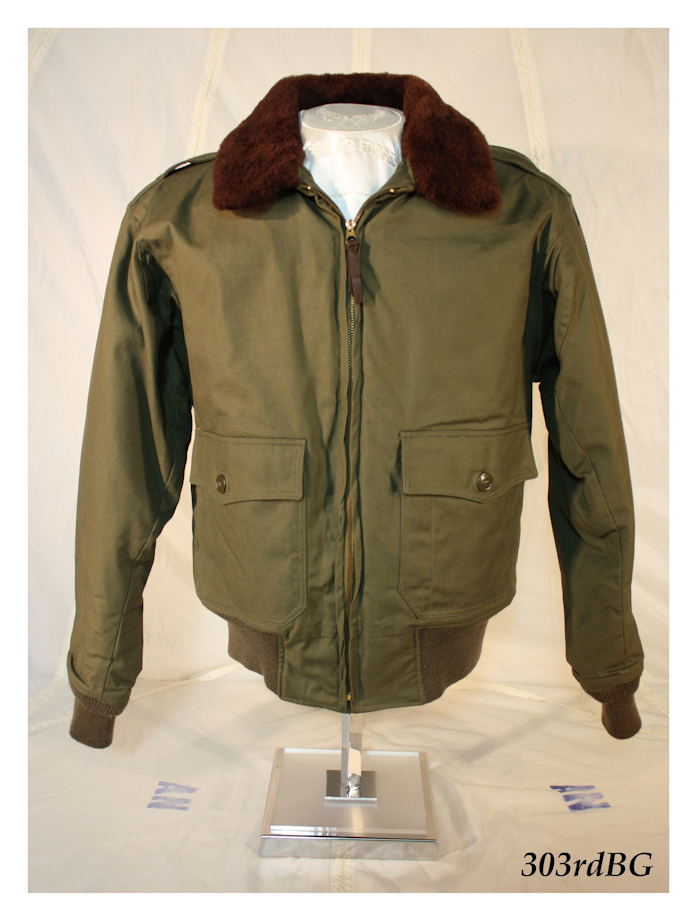
(4-8) The above B-10 jacket is made by the Stagg Coat Company. It was issued to Paul Newcomer who flew B-17s with the 385th Bomb Group. Newcomer was shot down and became a POW. He survived the war and recently passed away. The jacket had spent 99% of its life in a footlocker until a relative posted it on eBay. If you were to go back in time to the Stagg Coat Company and take a jacket off the end of the production line, it would look like this jacket. It has never been washed or worn and is in mint condition. Enjoy!
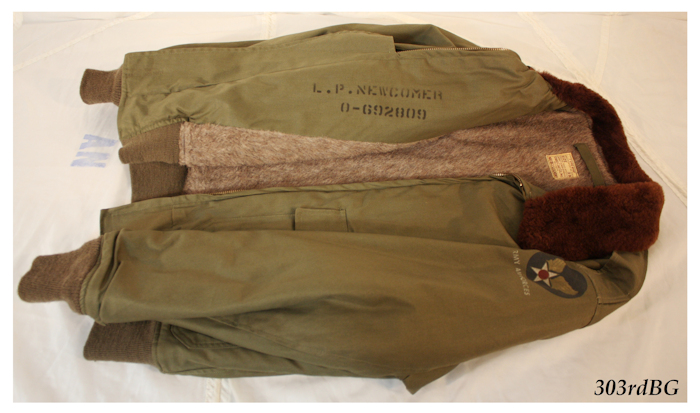
(4-9) Inside view of the B-10 jacket in the previous photo. As a courtesy to the authors of the book "Thunderbolts of the Hell Hawks" (By Don Barnes, John Grump & Ron Sutherland), I provided a photo of Newcomer's B-10. It appears on page 104.
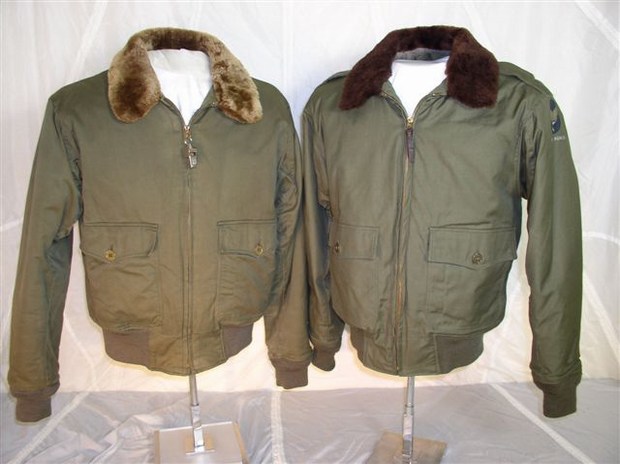
(4-10) On the left is another example of a B-10 from the Stagg Coat Company, minus the epaulets.
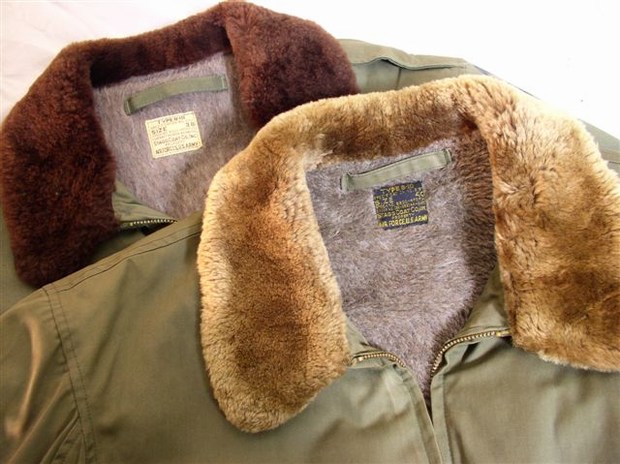
(4-11) Above are two close up shots of previous Stagg B-10s. Washing and sun fading has taken its toll on one collar. The different colored labels, even from the same manufacturer, is a common trend found among the B-10 jackets.
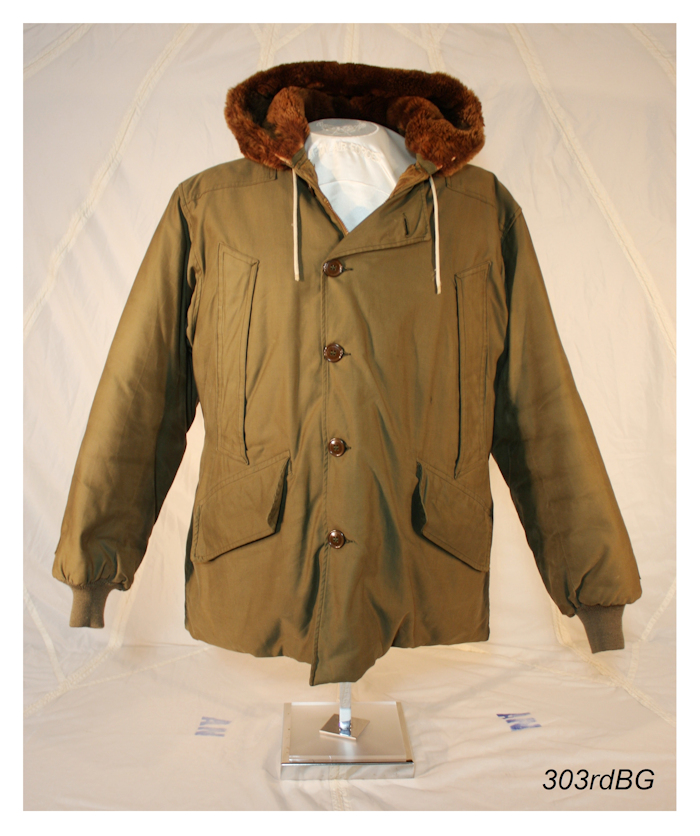
(4-13) Shown above is the B-9 jacket. The matching pants were the A-8 trousers. Both were made of the same materials. Shown below left is the interior showing the quilted, down-filled satin lining. The example shown was made by Eddie BAUER. The fur in the hood is mouton.
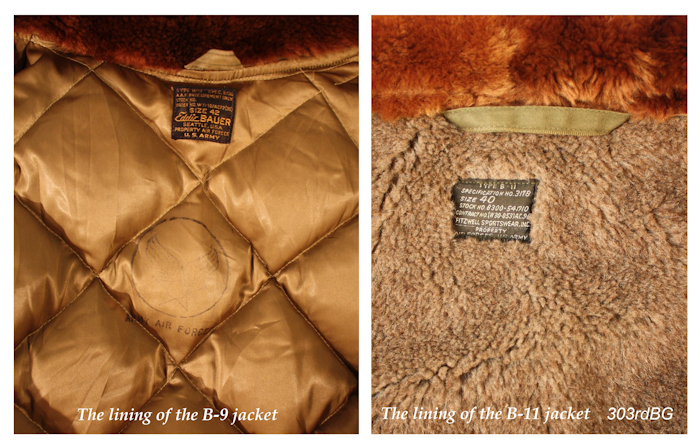
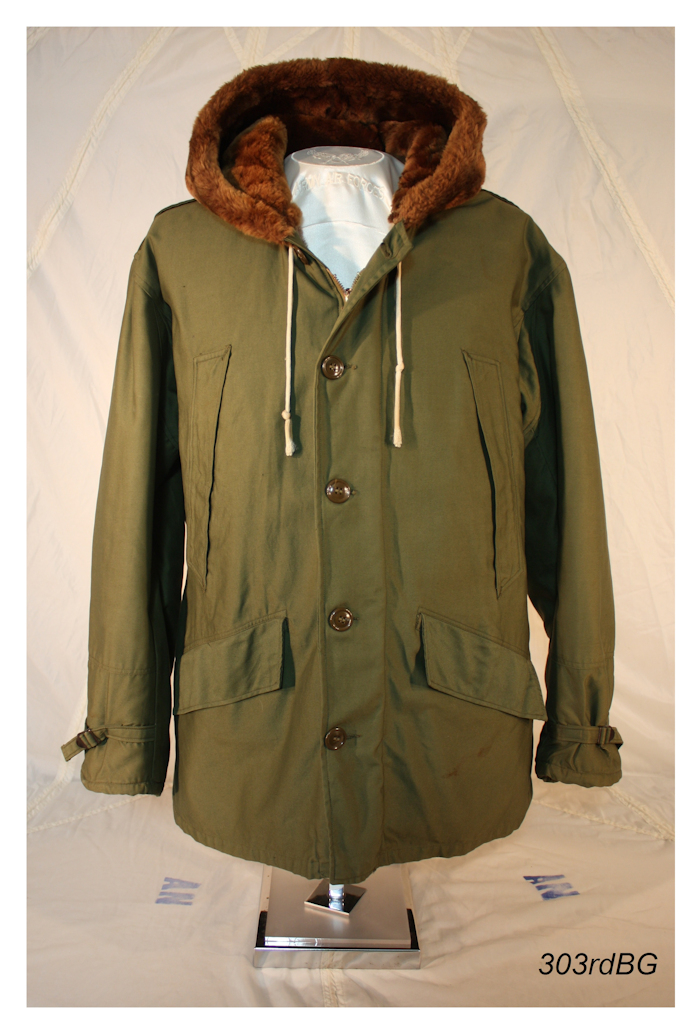
(4-XX)
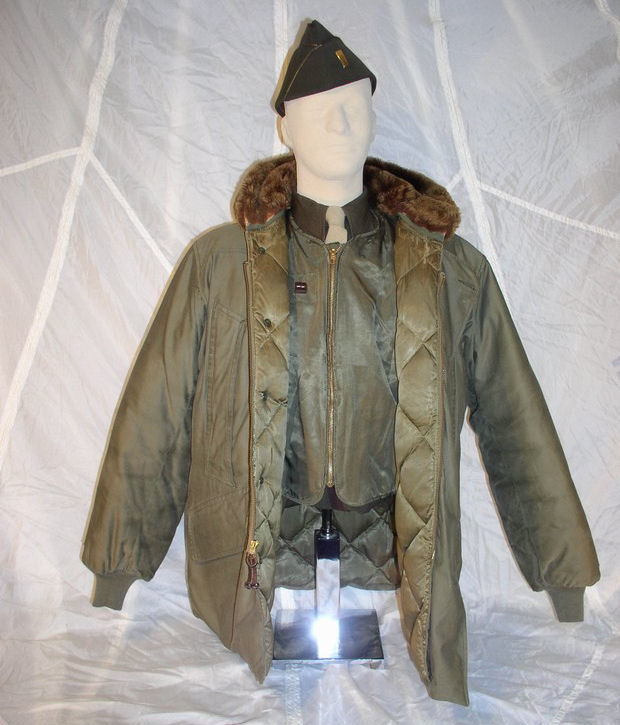
(4-14) This photo is based on Capt James F. McNamara in the Mission #250 Lead Crew Photo. He wears the B-9 jacket over the F-3 heated suit.
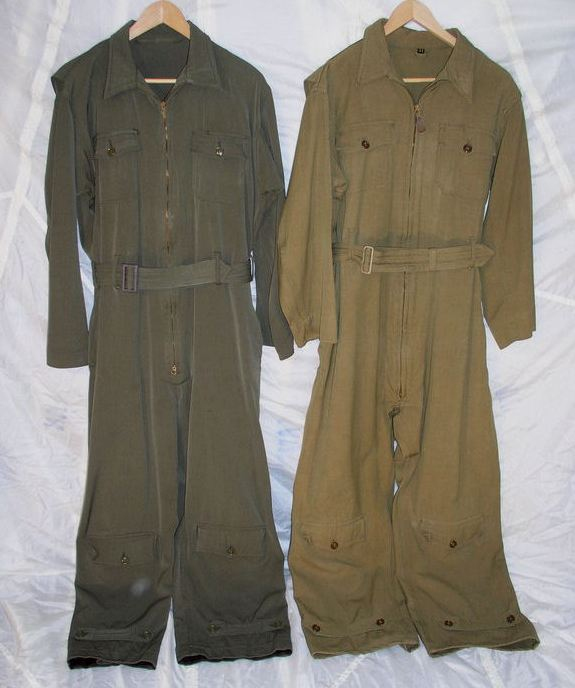
(4-15) Above is the AN-6550 flying suit in both dark green and lighter shade color. This suit replaced the earlier A-4. The green suit seems to be the dominate one used by crews. A crew member may have worn this over the F-3 heated suit followed by the A-9 pants and B-10 jacket or he may have worn it under the F-2 heated suit. How each individual dressed for a mission certainly varied, based on the crew position and his tolerance of cold. See an example in the 360th Hunsinger Crew photo.
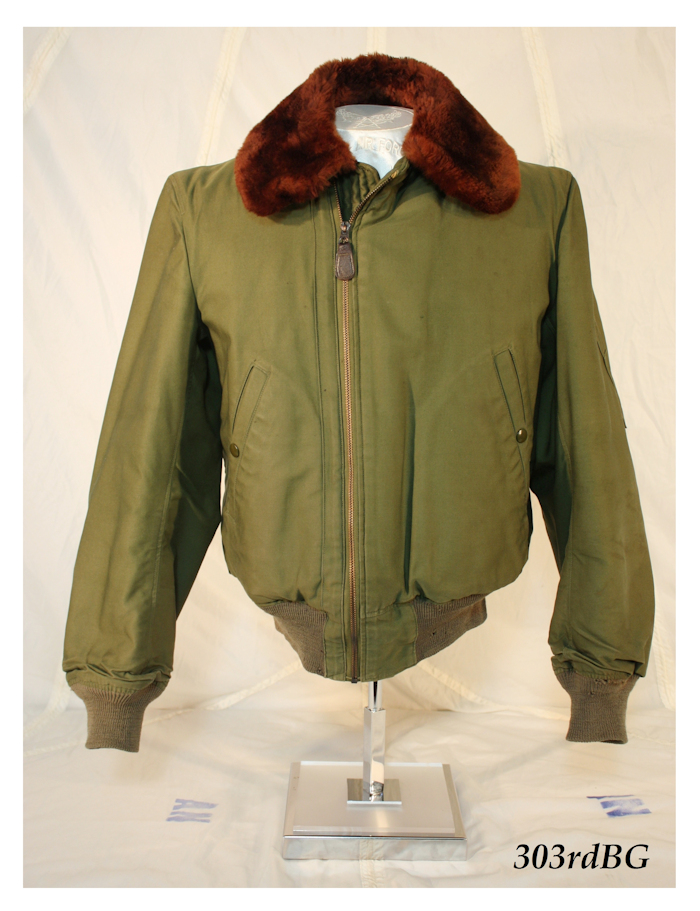
(4-16) Next is the B-15 jacket. The earliest dated photo I could find of its arrival is December of 1944. Examples are at combat crews Jack D. Breslin Crew and the Robert F. Vail Crew, both of the 360th Bomb Squadron. More examples are the 427th Robert W. Krohn Crew, the Fred E. Mitchell Crew and the James W. O'Leary Crew. Two more excellent examples are in the first two photos of the 359th Bashor Crew. In their stateside photo you can see that the supply of B-10 jacket had not yet been exhausted.
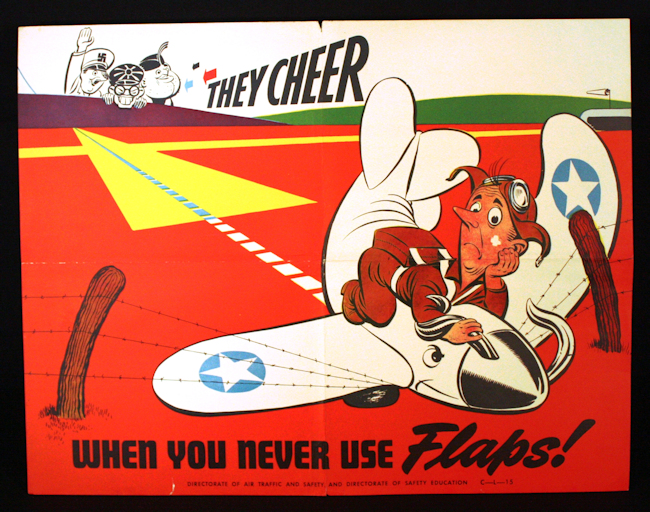
Above is an original WWII Safety Poster reminding pilots in training of the many mistakes new pilots make. All of the posters are 17 X 22 inches in size.
| The uniforms and gear presented here are from the private collection of Ed Nored. Any reproduction or other use of these copyrighted photographs is strictly forbidden. 303rdBG.com was granted exclusive rights to these photographs solely for historical purposes. The items shown are not for sale. |